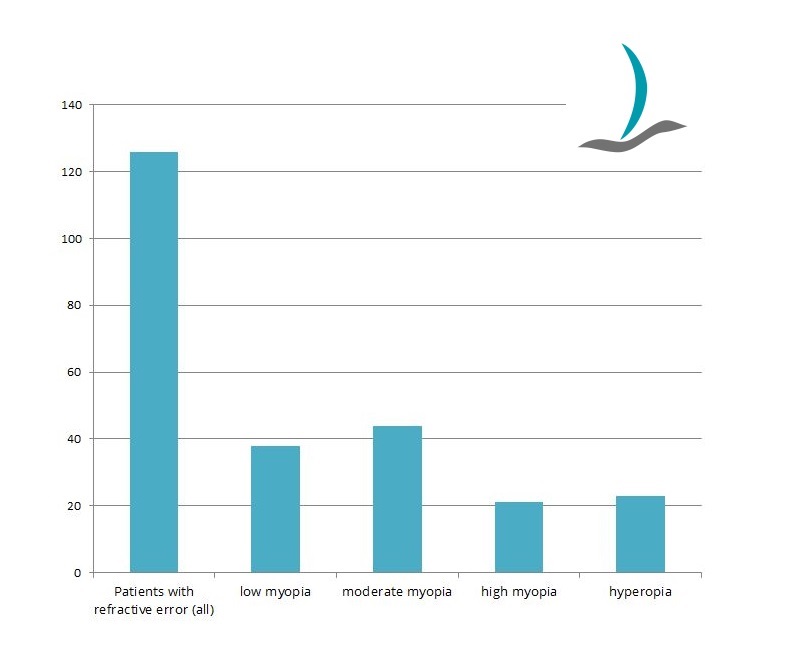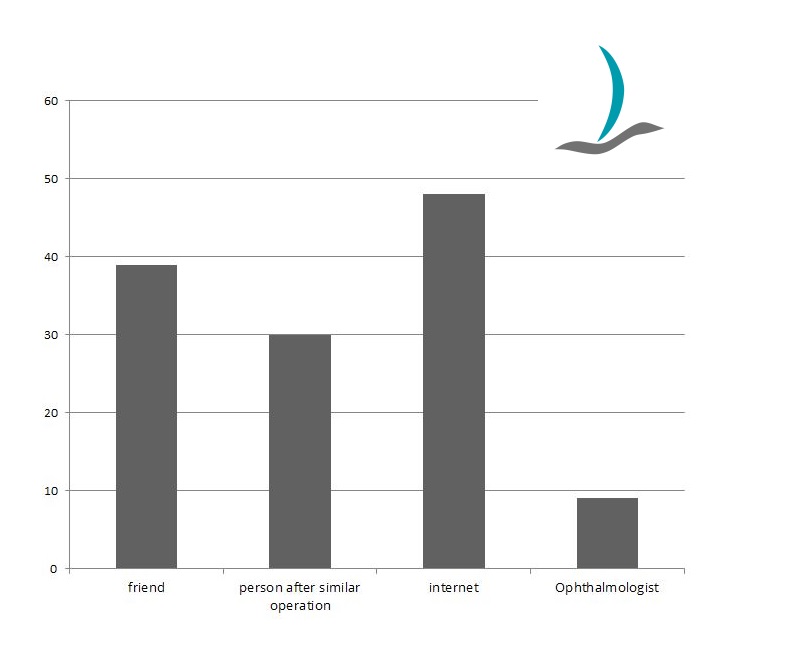
What patients report to our Centre? |
| 10.09.2021 |
Candidates for laser vision correction who have made an appointment for a preliminary qualifying examination have been asked to fill out an anonymous survey regarding their refractive error and preferred sources of information about laser vision correction. Questionnaires of 160 patients have been accepted as complete and therefore valid. 126 patients have been qualified for the surgery. Laser vision correction has been performed in our Centre. The average age of the patients was 32,8 ± 8,6 years. Women constituted 55,6% patients in this study.
The conclusions drawn from the analysis of the surveys have been discussed in an article by Doctor of Medical Sciences, specialist in eye diseases, ophthalmic surgeon Piotr Kanclerz, one of the ophthalmic surgeons working in our Centre. The whole article is available for reading on the website of Digital Journal of Ophthalmology 2021.

As few as 18% were people with far-sightedness (from +0,25 dioptre). In case of far-sighted patients, presbyopia was diagnosed more often than in other patients.
Interestingly enough, contact lenses were more willingly used by short-sighted people and it was them who considered undergoing laser vision correction for a longer time – even about 3 years – before they made the decision.
Approximately 97% of the respondents knew what refractive error they had and what its values in dioptres were. Out of 160 people, 56 knew about their astigmatism, but only 18 people could give its cylindrical value.
In patients with medium (from -3,25 to -6,00 dioptres) and high (above -6,00 dioptres) short-sightedness, who had laser vision correction, a LASIK method, which involves creating a flap, was more commonly used.

As for the moment when patients decided to undergo laser vision correction, for 34.1% it was after talking it over with a friend; 29.4% made the decision after talking to another person who had undergone such an operation; and for 43.7% and 8.7%, respectively, it was after finding information on the Internet or consulting an ophthalmologist.
It is essential to use reliable and valuable sources of information. It may happen, however, that those given on the Internet do not fully coincide with reality. That is why we have decided to dispel the most frequent myths about laser vision correction, which you will read about in the articles on our website: Part I and Part II.
If you have a vision defect and are still thinking whether to have a laser vision correction surgery, check out what the one-day procedure looks like step-by-step in the video: https://www.youtube.com/watch?v=a-IHgrOjvCk and make an appointment today by filling out an online preliminary qualification form or by e-mail or phone.
With good eyesight you will discover the beauty of the world anew!